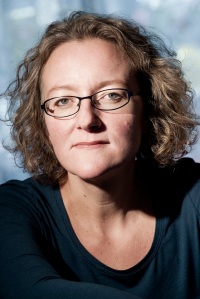
Today I’m thrilled to welcome crime writer Elizabeth Haynes to the First Draft hot seat. You can find a Recently Read post on Elizabeth’s first novel, Into The Darkest Corner, Here.
Elizabeth’s books are now published in more than 30 countries around the world and in over 20 languages with more due for release.
Her first novel Into the Darkest Corner was published by Myriad Editions in February 2011 and was featured on Channel 4′s TV Book Club. It was selected as one of Amazon UK’s Rising Stars and went on to win Amazon UK Best Book of 2011.
When you decide to write something new, what is the first thing you do?/Do you have a set routine approaching it?
I start a new notebook once I have an idea, and I’ll start by jotting down character names, ideas for scenes, any good bits of dialogue, titles, that kind of thing. I have two notebooks per book, one a small paperback Moleskine which goes everywhere with me, and one a hardbacked, ringbound A4 Whitelines notebook which will have everything in it from mind maps and to do lists through to acknowledgments in the back, so I don’t forget anyone who helped with the book.
But beyond a few brief notes, I don’t write much down. It’s more of a statement of intent. If it has a notebook, sooner or later I will write the novel.
Pen and paper or straight to the keyboard?
I always write first drafts in November for National Novel Writing Month (NaNoWriMo), so aside from the few brief notes, I will go straight to the keyboard to write and not stop until it’s done (by which I mean I don’t edit as I go along, I do sometimes stop for tea, or sleep).
How important is research to you?
It’s very important, especially writing about real life subjects. Even if I haven’t been through these experiences, someone out there has, and I think it’s insulting to them not to make an effort to find out what a situation is really like.
How do you go about researching?
When I start writing, I usually have an idea of the subject matter the book will cover, so I’ll have done some general research to enable me to write freely without getting too stuck. As I’m writing, I’ll note down specific questions as they crop up. Once the first draft’s done, I have a much clearer idea about the gaps in my knowledge, so then I’ll go and do much more detailed research to cover those areas. Often the research itself will throw up some new ideas which I’ll then incorporate into later drafts. It’s probably not the ideal way to do it.
How do you store everything; ideas, research, images that catch your eye?
Bits of paper and ideas go in the notebooks (the Moleskin has a handy flap), images go into Scrivener, which I use to write. I also have a Spotify playlist for each book. The music isn’t necessarily relevant to the story (apart from Revenge of the Tide, for which I had Genevieve’s dancing music as a playlist), it’s just the music I’m listening to at the time.
Tell us how that first draft takes shape?
Very quickly! I never know what’s going on with the story until it happens, which is a result of writing at speed. On a good day I can do 10,000 words and my record is about 12,000. Most days I’ll write about 5-6,000 words and on some days I won’t write anything at all. I’ll carry on after NaNoWriMo finishes until the first draft is done. Then I’ll leave it for a month or so before re-reading it and doing some rough corrections, taking notes as I go. Usually it will be a mess, with big plot holes, subplots that don’t go anywhere, characters who change name halfway through, and a rubbish ending that doesn’t make sense. But there will be some intriguing ideas in there, too, and I’ll usually be quite keen to dive back in and start fixing things.
Are there any rituals you have to do or items you must have with you while writing that draft?
I don’t think so. I drink far too much coffee and eat too much chocolate, which seems to help. I think NaNoWriMo itself is something of a ritual, because if I try to write first drafts without the momentum that November gives me, I struggle and usually give up.
Does the outside world exist or are you lost to us for a period of time as the magic works?
November is actually the social high point of my year. I’m the co-Municipal Liaison for Kent, which means that I spend much of the month driving around the county meeting other participants for write ins. But once I’m immersed in my story, I do find I switch off quite easily. I work well in coffee shops with lots of noise and chatter around me.
 What does your work space look like?
What does your work space look like?
I have a writing shed which takes up a lot of the garden, with desk and bookcases courtesy of IKEA. I also have an IKEA Poäng armchair and footstool, which gets in the way a bit. I also have a filter coffee machine, a small grinder and lots of mugs, piles and piles of unread books, lots of books telling me how to write better books, magazines and a secret biscuit tin that I have to hide from myself.
Edit as you go or just keep getting words out?
Definitely editing as a separate process!
I see many writers counting words in a day. Word counter or other method of keeping track of progression?
In November, word count is everything. It reminds me that I’m making progress. Scrivener is good at keeping track of your targets, but during November I regularly update my word count on the NaNoWriMo website. I also use a spreadsheet that my husband created for me, which shows other useful and encouraging statistics, like percentage achieved, how many words left until target reached.
So, that first draft is down. Roughly how long did it take? And what shape is it in?
At least 50,000 words in November, but I won’t have reached the ending by that stage. I’ll carry on writing until it’s done, which will probably take me into January. By that time it will be about 90,000 words.
In what format do you like to read it through, ereader, paper or the computer screen?
I very rarely print it out. I email each draft to my kindle and I’ll read through on that, but only if I’m going on a long journey. Usually I’ll just read it on my laptop and fix things as I’m going along.
What happens now that first draft is done?
Firstly I will have a bit of a break and try and re-engage with the outside world. When I’ve finished a draft I sometimes feel a bit bereft, and it takes me a few days to catch up with myself. After that, I’ll do a single read-through which will involve correcting spellings, removing really awful bits, and changing anything that is easy to fix. Once that’s done I’ll send it off to my agent and my editor and then the process begins. I can’t edit on my own, I need other people to show me how what needs to be re-worked.
Thanks for digging into the depths of the first draft. It’s been a pleasure having you.
Thank you for asking! This was a really interesting exercise, I’ve never really thought about the mechanics of my first draft before.
You can find Elizabeth on her website, Twitter and Amazon.
Under a Silent Moon.
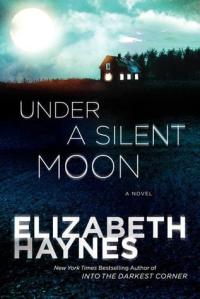 In the crisp, early hours of an autumn morning, the police are called to investigate two deaths. The first is a suspected murder at a farm on the outskirts of a small village. A beautiful young woman has been found dead, her cottage drenched with blood. The second is a reported suicide at a nearby quarry. A car with a woman’s body inside was found at the bottom of the pit.
In the crisp, early hours of an autumn morning, the police are called to investigate two deaths. The first is a suspected murder at a farm on the outskirts of a small village. A beautiful young woman has been found dead, her cottage drenched with blood. The second is a reported suicide at a nearby quarry. A car with a woman’s body inside was found at the bottom of the pit.
As DCI Louisa Smith and her team gather evidence, they discover a shocking link between the two cases and the two deaths-a bond that sealed their terrible fates one cold night, under a silent moon.
In this first entry in a compelling new detective series, Elizabeth Haynes interweaves fictional primary source materials-police reports, phone messages, interviews-and multiple character viewpoints to create a sexy, edgy, and compulsively readable tale of murder, mystery, and unsettling suspense.
As usual, if you want to take part in the First Draft series, just let me know! You can find a list of the previous Q&A’s Here.
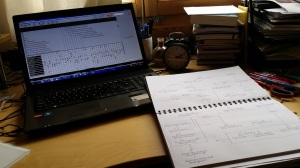

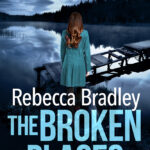
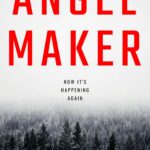
How interesting that Elizabeth keeps the NaNoWriMo spirit going! I did it two years in a row and found it very helpful indeed (although I failed to complete the target by about 3000 words the 2nd year). I was absolutely captivated by Into the Darkest Corner and I have a couple of other books by Elizabeth on my Kindle which I’m looking forward to reading.
So intriguing and interesting – love the bit about hiding the biscuit tin from yourself. Thank you Elizabeth and Rebecca 🙂
Great interview! I’m in awe of Elizabeth’s 10,000 word count – I can only dream of that 🙂 I have that bereft feeling too, when the draft is finished. I usually want to dive back in, but try to give myself a couple of days rest, at least.
I wrote 6000 words overnight for a uni assignment (due the next day ) 🙂 Nothing like a bit of pressure to get things moving 🙂 Into the Darkest Corner must be my favourite book…it had me literally jumping at shadows.
Ten thousand words a day? Whoa…
Like your attitude that it would be insulting to those who’ve been through it to get a situation wrong.
Rebecca – Thanks for hosting Elizabeth.
Elizabeth – Thanks for taking the time to share your writing process. I really admire your way of just putting your head down, as the saying goes, and writing. I think that’s a great way to accomplish your writing goals. And I couldn’t agree more about how important research is. I wish you much continued success.
What a fascinating look into a writer whose books I’ve really enjoyed reading. I do like how she does NaNoWriMo – an inspiration for all those who take part.
Thanks for the follow. I’m looking forward to reading your blog. Kristina
Aha! The first of your authors to mention the all-important chocolate, I think! That clearly explains why I enjoy Elizabeth’s books so much… 😉
Fascinating. I can’t imagine writing that many words in a day–even at your 5k end. It must simply gush out of you!